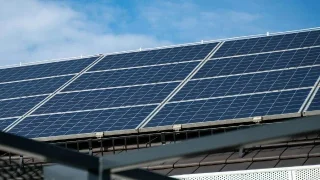
The Centre for Independent Studies welcomes the opportunity to respond to the Australian Energy Regulator’s Valuing emissions reduction draft guidance.
The CIS is a leading independent public policy think tank in Australia. It has been a strong advocate for free markets and limited government for more than 40 years. The CIS is independent and non-partisan in both its funding and research, does no commissioned research nor takes any government money to support its public policy work.
The Australian Energy Market Commission’s National Electricity Amendment (harmonising the national energy rules with the updated energy objectives) 2024 Rule determination requires Australian Energy Market Operator to include the value of emissions reductions in its Final ISP. This value has the potential to be in the billions of dollars for any given project, materially impacting the Optimal Development Path, project actionability and timing, and subsequent RITs.
We have made a number of recommendations for the AER, headed by three objections:
- The Final 2024 ISP and ODP rest on unconsulted methods as a result of AER actions;
- This guidance means RITs must use unconsulted methodology; and
- The AER has failed to advocate for consistent rule changes.
1. The Final 2024 ISP and ODP rest on unconsulted methods as a result of AER’s actions
The Final ISP and ODP will be based on an unconsulted methodology that could have a material effect on outcomes, because AEMO is developing a method to include the value of emissions reductions for the Final 2024 ISP. However, that method has not been included in the Draft 2024 ISP.
The AER has stated that “AEMO will now consider emissions reduction as a class of market benefit in the final 2024 ISP, and it will flow through to the ISP market modelling and option analysis”.[1]
While we accept that this is a requirement of the NEL and the NER,[2] we believe the AER nonetheless has the authority to require that AEMO consult on the methodology used to make emissions reduction “flow through to ISP market modelling and option analysis”. This leads to the first recommendation at the bottom of this section.
We also believe the AER could provide guidance on how to apply the MCE-issued VER and consult on it, to ensure material input to the Final ISP and ODP is scrutinised. Indeed, the AEMC Final Determination expects AER to provide this in their guidance:
“… the existing rules and the NEL are sufficient for the AER to provide guidance to AEMO and RIT proponents on how to value emissions reduction benefits, including how to apply an MCE-issued VER…”[3] (emphasis added)
This leads to the second recommendation in this section. Note that for both the recommendations below, we believe a “specific methodology” and guidance on “how to apply an MCE-issued VER” as noted by the AEMC above are the same.
Recommendation 1: AER should require AEMO to provide specific methodology for including the value of emissions reductions in ISP modelling and consult on that methodology before it is used in the Final 2024 ISP and the resulting ODP.
Recommendation 2: Alternatively, the AER should provide specific methodology for including the value of emissions reductions in the ISP modelling and consult on that methodology before it is used in the Final 2024 ISP and the resulting ODP.
2. This guidance means RITs must use unconsulted methodology
The AER has stated that the review of the Cost Benefit Analysis Guidelines and RIT Applications Guidelines will take place between April and November 2024. The AER draft guidance has also required that “RIT-Ts should be undertaken using a consistent approach to that taken in the ISP”.[4]
Given that the reviews of the CBA and RIT Applications guidelines will follow the development of the ISP VER methodology, proponents will be required to undertake RIT-Ts and RIT-Ds using an unconsulted methodology following publication of the Final 2024 ISP in June. This will be possible for several months before the CBA and RIT Applications Guideline reviews are completed in November and December, respectively.
This raises the question of which approach proponents will be expected to use following the review of the Guidelines. Of particular concern is the statement that “Issuing revised Guidelines will not itself revoke or amend this guidance and this guidance would prevail to the extent of any inconsistency”,[5] with the implication that the unconsulted ISP methodology could remain in force even where the updated Guidelines deviate from it.
Recommendation 3: There should be clarification of whether proponents be required to take the approach of the Final 2024 ISP (per the AER VER guidance), or the approach outlined in the updated guidelines, following the review of the Cost Benefit Analysis Guidelines and RIT Applications Guidelines.
Recommendation 4: The AER guidance should declare which is preferred (ISP methodology or updated CBA/RIT Guidelines) where there is an inconsistency following the update to the Guidelines.
3. The AER has failed to advocate for consistent rule changes
The NER requires ISPs to “identify the optimal development path… in accordance with Cost Benefit Analysis Guidelines”.[6] The CBA Guidelines are in turn required to undergo consultation for any change that is not merely “minor or administrative”.[7] The CBA Guidelines do not include emissions reductions from market benefits, but require AEMO to include:
“… other classes of market benefits that are specified in the CBA guidelines; or that AEMO determines to be relevant and the AER agrees in writing before AEMO publishes the draft ISP.”[8]
AER could have required that VER only be incorporated in the Final 2024 ISP if values were issued early enough for AEMO to include them in the Draft 2024 ISP and consult on them. Instead, the deadline was set two weeks after consultation closed on the Draft 2024 ISP. Indeed, the ECMC planned to release the guidance in mid-October, showing that the AER could have expected earlier guidance to be possible.[9]
The AER also failed to object to the way the AEMC rule change unnecessarily permitted the skirting of consultation for how VER were applied to the Final 2024 ISP and subsequent RIT-Ts.
The AER did recommend that clauses 5.22.5(g) and (h) were disapplied from the current ISP process to promote clarity and consistency. We are concerned the AER advocated for a consistency that would benefit transmission and generation firms but failed to advocate for consistency with consultation requirements that protect consumers.
Recommendation 5: The AER should enforce and promote the NER, including promoting changes that create consistency and transparency.
[1] AER, 2024. “Valuing emissions reduction AER draft guidance”. p 6. https://www.aer.gov.au/system/files/2024-03/AER%20-%20Valuing%20emissions%20reduction%20draft%20guidance%20-%20March%202024.pdf.
[2] The transitional arrangements in the NER 11.162.7 (a) and (b) now clearly require both the 2024 Final ISP and RIT-T proponents to include the value of emissions reductions as a class of market benefit.
[3] AEMC, 2024. “Rule determination: National Electricity Amendment (Harmonising the national energy rules with the updated energy objectives) Rule 2024.” p 23. https://www.aemc.gov.au/sites/default/files/2024-01/final_determination.pdf.
[4] AER, 2024. p 6.
[5] Ibid. p 2.
[6] NER 5.22.6 (a)(4)
[7] NER 5.22.5 (f)
[8] AER, 2020. “Cost benefit analysis guidelines: Guidelines to make the Integrated System Plan actionable.” p 21. https://www.aer.gov.au/system/files/AER%20-%20Cost%20benefit%20analysis%20guidelines%20-%2025%20August%202020.pdf.
[9] Energy and Climate Change Ministerial Council, 2023. “Meeting Communique.” 7 July 2023, p 3. https://www.energy.gov.au/sites/default/files/2023-07/ECMC Communique_7 July 2023.docx.








